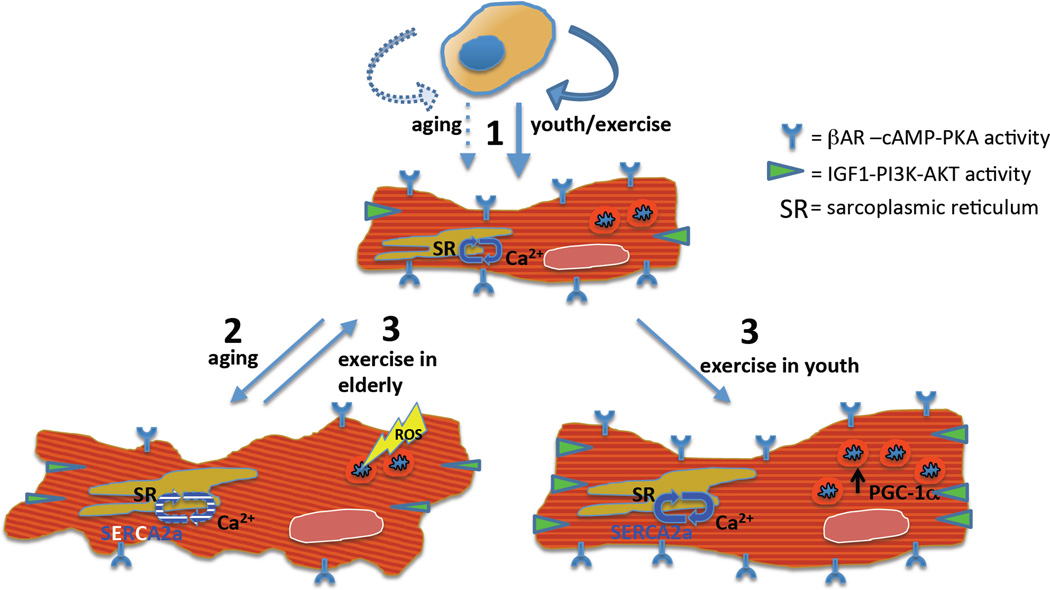Figure 1.
Multiple mechanisms have been proposed for the impaired cardiomyocyte function observed in aging, and how exercise partially reverses their effects. (1) Diminished cardiac performance in the pathological hypertrophy of aging is linked to decreased IGF1-PI3K-AKT and bAR-cAMP-PKA signaling, decreased SERCA expression and activity and inefficient calcium handling, and mitochondrial dysfunction secondary to excessive ROS. (2) Exercise confers physiological hypertrophy and cardio-protection in the form of enhanced beta-adrenergic and IGF1 signaling, SERCA activity and calcium handling, and mitochondrial dynamics, the latter mediated largely through PGC-1a. (3) These benefits of exercise mitigate the effects of aging (Illustration Credit: Ben Smith).

